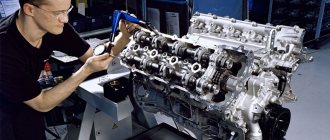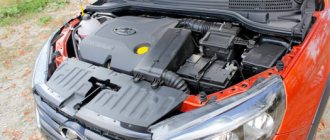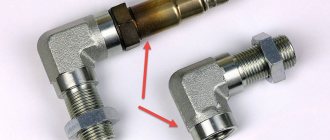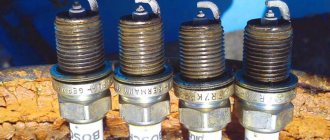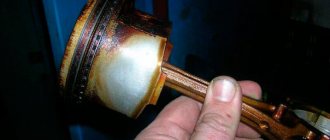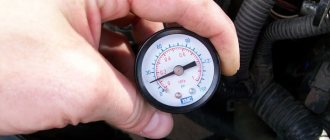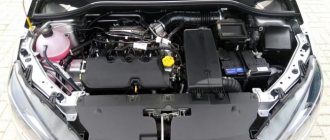The question regarding periodic spin-up and/or constant operation of a diesel engine at certain speeds is often asked by former owners of gasoline cars. It is worth noting that the concept of maximum speed on a diesel engine and the so-called low speed of diesel engines differ greatly in relation to one or another power unit.
Each internal combustion engine model has its own individual characteristics, which are expressed in terms of power and torque. It is also necessary to take into account the design features of a particular engine, which determine the maximum permissible engine speed. The optimal driving modes for a particular engine will directly depend on the torque and power curve.
We also recommend reading the article about the differences between diesel engine oil and lubricant for a gasoline engine. From this article you will learn about the operating features of a diesel internal combustion engine and the individual requirements for engine oil for units of this type.
For a powerful turbodiesel engine that is installed on heavy trucks, normal operation is about 1800 rpm. A small diesel engine in a passenger car provides confident traction in the range of 2200-2500 rpm. It is quite obvious that the maximum speed on these engines will be different.
What speed should a diesel engine have?
There are three groups of drivers. Some try to drive at the lowest possible speed and “pull”. Others periodically turn the engine to higher speeds, considering this useful. Still others drive in the “tachometer needle at the limit” mode. Who is right?
Low RPM
Let's start with those who prefer to change gears early and keep the crankshaft speed within 2500 thousand rpm. on gasoline engines and about 1100-1200 thousand rpm. on diesel. Moreover, many people get used to driving this way from the very beginning, when a driving school instructor or relative teaches that it helps save fuel and not overload the engine.
But it's not that simple. Let’s imagine: a car is driving approximately 55 km/h, in fourth gear on the asphalt, speed is within 2000. Then the road terrain changes, let’s say there is a descent or ascent, and the driver does not change gear, but simply adds or removes gas. This leads to engine detonation , it simply collapses from the inside. Fuel consumption also does not decrease; on the contrary, pressing the gas in a higher gear under load results in an excessively rich fuel mixture.
In addition, driving “pull” increases engine wear due to insufficient lubrication of the rubbing parts of the engine. The fact is that plain bearings operate effectively only in conditions where oil is supplied under high pressure into the gaps between the shaft and the bearings. The higher the crankshaft revolutions, the greater the oil pressure and, accordingly, the less wear on the associated elements. And the most harmful consequence of driving at low speeds is engine coking , when the temperature in the cylinders simply does not have time to increase at low speeds to such an extent as to remove the deposits that form on the walls.
High speed
It’s easy to understand those who like to rev their engines: the car confidently responds to gas, making maneuvers even under severely limited time is easy and pleasant. And fuel consumption does not increase critically. But there are some nuances.
Firstly, what exactly is considered high speed. There are no exact numbers here; you need to rely on the manufacturer’s recommendations. For example, for gasoline engines, speeds exceeding 70% of those generally available are considered high. For a diesel engine, due to the design features, high speeds are those that exceed torque.
Constantly driving at high speeds increases the load on engine parts and the cooling system due to rising temperatures. As a result, increased wear of the motor and the risk of overheating.
Ideal for diesel engines
As always, the golden mean is that driving at medium speeds and slightly above average will help preserve engine life to the maximum. The average is defined as 30-70% of the maximum that the engine develops. It is important to take into account the type and features of the internal combustion engine.
Thus, for a small-displacement diesel engine of a passenger car, confident traction is created by revolutions in the range of 2200 - 2500 thousand. Due to the fact that diesel engines have higher torque at low speeds than gasoline ones, even a modern diesel engine of the Common Rail system can be spun up to a maximum of 4500 - 4800 thousand rpm At the same time, the power of the diesel engine drops sharply when reaching 3800 - 4000 thousand rpm. And it turns out that for a gasoline engine it’s “pull” driving, while for a diesel engine it’s the maximum torque speed.
Therefore, there is no need to “spin” the diesel engine ; this will not give an increase in traction, but will only cause excessive consumption of fuel and oil and wear of the CPG elements. The operating speed of a diesel engine is on average 1800 – 2800 rpm. You should adhere to these indicators and adjust your driving style based on them.
- News
- Kazakhstan News
- world News
- News
- Kazakhstan News
- world News
© youtube/Visiting the mechanic
Expert of the magazine “Behind the Wheel” Alexey Revin explained why the “pensioner” driving style is harmful to the car engine.
Modern gearboxes, both manual and automatic, allow the engine to operate under heavy loads and at low speeds. And drivers themselves sometimes do not like to rev the engine to high speeds for fear of rapid engine wear.
If you drive a car with a manual transmission, then switch to a higher gear as soon as possible. And if the car is equipped with an automatic transmission, then try not to press the accelerator pedal too hard. At the same time, hydromechanical automatic transmissions and CVTs strive to provide a gear ratio in which the crankshaft rotates no faster than 2000 rpm, no matter what speed you are driving.
However, this mode, says the expert, does not at all extend the life of the motor. The parts of the crank mechanism are loaded and the piston pressure on the cylinder wall is high. And all this in conditions where the oil pump has low performance. This threatens to quickly wear out the antifriction layer on the crankshaft liners, and on the pistons too. And then the pistons will start hanging out in the cylinders. This reduces the efficiency of the piston rings and brings closer engine overhaul.
“If you want the engine to travel significantly more than what is stated in the warranty, give it some heat. The engine needs to periodically increase speed to clean the combustion chambers and spark plugs from carbon deposits. A large amount of exhaust gases, which occurs only at high speeds, is also useful for cleaning turbocharger elements. The bypass valve or the controlled nozzle apparatus of the turbine (depending on its design) do not work over the entire range if you constantly drive like a pensioner. As a result, they begin to lose mobility,” notes the auto expert.
According to him, in winter the situation is aggravated by the fact that the engine is often operated unheated.
“This leads to condensation of moisture in the engine crankcase, which mixes with the engine oil, thereby impairing its lubricating properties. Such engines need “frying” of the oil, which is possible on a relatively warm day for winter and when the car is moving at high speeds and speeds. In this case, the moisture will evaporate from the oil almost without a trace,” Revin explained.
To drive the engine at high speeds, the expert advises “in good dry weather, drive onto an open, straight, multi-lane highway and drive at engine speeds above 5000 per minute for at least half an hour, or better yet, an hour.”
“To do this, at a speed of about 100 kilometers per hour, you need to drive in fourth gear (if the gearbox is manual). On a car with an automatic transmission, select manual control mode and shift down one or two gears. Don't be afraid to overdo it - the electronics won't let you push the tachometer needle too far into the red zone. The units will not be damaged.
It's the same with CVTs. We move the gearbox selector to the position of manual control of virtual gears. By selecting a gear, we ensure that the engine operates at a speed of at least 5000 rpm. And don’t be surprised by the high fuel consumption on this part of the journey - after all, cleaning and purging the engine is worth it,” said Alexey Revin.
Petrol or diesel: whose horses are stronger?
There are still eccentrics who firmly believe that 100 diesel horsepower corresponds to approximately 140 gasoline horsepower. The point, they believe, is in the torque, which is much higher in a diesel engine.
It was not so easy to clarify the situation competently. I had to consult every now and then in a variety of places - at VAZ and UAZ, GAZ and YaMZ. As a result, the treatise received universal “approval,” but the author was advised to hide in advance from the stream of tomatoes launched by dissatisfied apologists of this or that engine. Like, there will be the same reaction as if a Spartak fan in his red and white colors climbed onto the Zenit podium...
In general, we figure out whose forces are stronger. And along the way, to make it more fun, let’s try to answer a seemingly simple question:
“Given two cars that are as close as possible in design - gasoline and diesel. Initial conditions: modern engines of the same power, ideally matched for each gearbox, exemplary drivers (almost robots!), excellent grip. Which car will be on the track faster?
Simple question? It turned out that not very...
Horse moment
To accelerate a car you need energy. The more energy you can expend per unit of time, the faster the car will accelerate. In other words, we are talking about power. The higher the power, the faster the car: everything seems simple. But…
But in practice the picture is different. The maximum power of the engine, both gasoline and diesel, is achieved only with full fuel supply - it is clear that this corresponds to the “pedal to the floor” position. But the main life of the car takes place in partial fuel supply modes, in which the power developed by the engine is clearly below the maximum.
Let us remember that torque and power are almost twin brothers, like Mayakovsky. They do not exist without each other: after all, power is torque multiplied by the crankshaft speed. And if at a certain rotational speed the internal combustion engine is capable of producing higher torque than its competitor, then its power at this moment should also be higher. One without the other is simply unthinkable. Therefore, we immediately stop talking about the fact that someone with equal power has higher torque at the same speed: this is not serious.
If the torque were constant throughout the entire crankshaft speed range, then the external speed characteristic, showing the dependence of power and torque on the rotation speed, would turn into a straight line, and the power would be directly proportional to the tachometer readings. Then there would be no difference at all in the behavior of gasoline and diesel engines of equal power. However, it was precisely the peculiarity of the flow of torque along the diesel curve that gave rise to the dissimilarity of their behavior.
How to reduce fuel consumption in a car with an automatic transmission
Car owners don't always know all the intricacies of driving their vehicle, including how to drive economically. MotorPage.Ru experts have found out what helps save fuel on automatic transmissions.
Developing the habit of driving economically
Increased fuel consumption occurs during sudden acceleration. To save fuel, you need to abandon the ragged driving style, with sharp accelerations and sharp braking, this will significantly reduce fuel consumption.
As for cars with automatic transmissions, the following techniques will help drivers control fuel consumption:
- in city driving mode, the tachometer needle should not exceed 2000 rpm;
- on the highway, it is best to keep the engine speed around 1500 rpm (if the car allows it);
- when maneuvering to overtake, let the car accelerate smoothly;
- do not start abruptly from a traffic light, then the engine will consume less fuel.
Most of all, fuel consumption is recorded during car acceleration. Therefore, it is better to practice driving at speeds of no more than 2000. This will save not only money for saved fuel, but also engine life.
Special Modes
Motorpage experts recommend using the “Sport” mode only in extreme cases. This option, although intended for overtaking in lower gears, significantly increases fuel consumption.
Modern vehicles with automatic transmission have the so-called “E” mode with a fuel saving function, which helps ensure movement at a moderate pace, limiting the rate of various types of acceleration, which helps to save fuel.
Idle speed control
The idle speed regulator is a device that is actually designed to provide air supply to the engine when the accelerator damper is closed.
For this, there is a special bypass channel, which opens the IAC. At its core, it is a motor or solenoid valve that closes and opens the bypass channel. In addition to keeping the engine idling, this regulator provides a smooth reduction in engine speed when you release the gas pedal. Such a motor can open the channel after each gas release, but not close it. So much for increased engine speed at idle. In some cases, the cause of too high idle speed is incorrect adjustment, which is carried out using a special screw. In this case, you should tighten the adjusting screw, monitoring the engine speed. This is perhaps the simplest solution to this problem. Source
Engine life 1.4 TSI
The first thing a potential car owner looks at when purchasing is the optimal combination of engine and transmission. Not all drivers strive to purchase the most powerful engines, and automakers understand this by offering various engine variations for purchase. One of the common engine variations of European car brands in Russia is the 1.4 TSI engine. This engine is installed on Skoda, Audi and Volkswagen cars. In this article, we will look at the advantages and disadvantages of the 1.4 TSI engine, as well as what its service life is.
Engine characteristics 1.4 TSI
On sale you can find 1.4 TSI engines with different amounts of horsepower, the number of which depends on the engine settings. The 122 hp model is considered the basic and most common, and it will be considered in this article.
The 1.4 TSI is a 16-valve turbocharged petrol engine with direct injection. The engine has two camshafts, turbine compressors and hydraulic compensators. This engine uses a chain mechanism in the timing drive.
Main problems of the 1.4 TSI engine
The 1.4 TSI engine has been on the market for quite a long time, and car owners have already managed to identify its common shortcomings. Among the problems of the 1.4 TSI engine are:
Chain drive problems. As mentioned above, the engine uses a chain, and this is the one with which drivers most often have problems. Despite the fact that the manufacturer in the technical passport of a car with such an engine indicates the service life of the chain almost throughout the entire life of the car, in fact it is necessary to change the chain every 60-100 thousand kilometers. You can diagnose the need to replace the chain by characteristic extraneous noise and knocking from the engine. Please note: In some situations, the problem with the chain mechanism is not the chain wear, but the unreliability of the tensioner.
- Increased oil consumption. Another problem that drivers of cars with a 1.4 TSI engine complain about. The engine needs a large amount of oil, and experts recommend updating the lubricating fluid in the engine at least once every 10 thousand kilometers. At the same time, a turbocharged engine is picky about the quality of oil, so you should use the options recommended by the manufacturer. Important: When purchasing a used car with a 1.4 TSI engine, you need to determine how often the owner changed the engine oil. If he did this less often than once every 10-12 thousand kilometers, and the total mileage of the engine exceeds 60-70 thousand, it is better to refuse to buy such a car.
- Engine coking, that is, the formation of coke deposits (from oil combustion) on the valves and in the oil receiver. This problem occurs if the driver often operates the car at high speeds. If a car with a 1.4 TSI engine has a manual transmission, you need to control the speed, that is, select a higher gear if necessary.
- Use high quality gasoline. Like any turbocharged engine, the 1.4 TSI is extremely susceptible to low quality fuel. It is recommended not to refuel such an engine at dubious gas stations and use only high-quality gasoline in order to delay the time until major repairs;
- Despite the fact that the engine is turbocharged, it is better not to get carried away with high-speed trips at high speeds, “breakdowns” at traffic lights and other elements of aggressive driving.
- It is not recommended to leave the car in park in gear without activating the handbrake. A spontaneous rollback of the car may occur, which will lead to the timing chain slipping and other problems.
These are the three main problems that owners of cars with a similar engine have identified with the 1.4 TSI engine over the years of operation.
Recommendations for operating the 1.4 TSI engine
Having considered the typical problems of the 1.4 TSI engine, we can draw conclusions about the rules for its operation:
Use high-quality oil recommended by the manufacturer. In this case, oil changes must be carried out more often than recommended in the vehicle maintenance book. The optimal oil change period is 10-12 thousand kilometers. Various oil additives can be used to improve its characteristics;
It's also worth noting that the 1.4 TSI engine doesn't warm up very quickly. Therefore, it is better to avoid short trips in a car with such an engine in the cold season. If such trips are made on a regular basis, the engine is constantly exposed to temperature changes, which negatively affect its operation. In cases where short-term operation of a car with a 1.4 TSI engine cannot be ruled out, it is recommended to change the spark plugs more often.
Engine life 1.4 TSI
The 1.4 TSI engine is not the most “long-lasting”, but it can easily “go” 150-200 thousand kilometers with proper operation and timely oil changes. At approximately 150-200 thousand kilometers, the turbine of such engines begins to fail, and a little later problems arise with injectors and other components responsible for fuel injection.
Optimal speed range
It is for the reasons stated above that diesel engines have a narrow speed range. The operating speed of the diesel engine is tied to the peak torque and is 1800-2800 rpm, and the power decreases sharply after 3800-4000 rpm.
These features force you to adjust your diesel driving style. What for gasoline means a tight ride, which occurs when upshifting too early, for a simple diesel engine is the speed of maximum torque.
There is no need to turn the diesel engine up to maximum speed, since after going beyond the “torque speed” there will be no further significant increase in traction. Moreover, high diesel speeds lead to increased wear of the CPG, excessive consumption of diesel fuel and diesel engine oil.
Engine speed and service life. Disadvantages of driving at low and high speeds. At what engine speed is it best to drive? Tips and tricks.
Why the engine breaks down: causes and consequences. Fuel injection pump malfunctions, problems with turbocharging and engine oil in the combustion chamber. How to turn off the internal combustion engine.
Causes of vibration and unstable operation of a diesel engine in idle mode. Possible causes and fault diagnosis.
Causes of difficult “cold” starting of a diesel engine. Compression, glow plugs, diesel injectors, injection pump, paraffin or water in the fuel system.
Why the engine may not pick up speed: gasoline engine, diesel unit, car with LPG. Fault diagnosis, useful tips.
Signs of a non-working cylinder (tribbing and vibration) of a diesel engine. Troubleshooting: compression, diesel injectors, glow plugs, injection pump and others.
Source
What engine speed should you keep?
Almost every driver is well aware that the life of the engine and other components of the car directly depends on the individual driving style. For this reason, many car owners, especially beginners, often think about what speed is best to drive at. Next, we will look at what engine speed should be maintained, taking into account different road conditions during vehicle operation.
Engine life and speed when driving
Let's start with the fact that competent operation and constant maintenance of optimal engine speeds allows you to achieve an increase in engine life. In other words, there are operating modes when the motor wears out the least. As already mentioned, the service life of the internal combustion engine depends on the driving style, that is, the driver himself can conditionally “adjust” this parameter. Please note that this topic is the subject of discussion and debate. More specifically, drivers are divided into three main groups:
Driving at low speeds
Let's take a closer look. Let's start with driving at the "bottoms". This mode means that the driver does not raise the crankshaft speed above 2.5 thousand rpm. on gasoline engines and holds about 1100-1200 rpm. on diesel. This driving style has been imposed on many since driving school. Instructors authoritatively assert that it is necessary to drive at the lowest speeds, since in this mode the greatest fuel economy is achieved, the engine is least loaded, etc.
Obviously, after receiving a driver’s license, this driving style is then actively practiced in one’s own car, developing into a habit. Drivers of this type begin to get nervous when the sound of a revving engine begins to be heard in the cabin. It seems to them that increased noise means a significant increase in the load on the internal combustion engine.
As for the engine itself and its service life, too “gentle” operation does not add to its service life. Moreover, everything happens exactly the opposite. Let’s imagine a situation when a car is moving at a speed of 60 km/h in 4th gear on smooth asphalt, the revolutions, say, are around 2 thousand. In this mode, the engine is almost inaudible even in budget cars, fuel is consumed minimally. At the same time, there are two main disadvantages in such a ride:
- There is almost no possibility of sharp acceleration without switching to a lower gear, especially with naturally aspirated engines.
- after changing the road terrain, for example, on inclines, the driver does not switch to a lower gear. Instead of shifting, he simply presses the gas pedal harder.
In the first case, the motor is often located outside the torque plateau, which does not allow you to quickly accelerate the car when necessary. As a result, this driving style affects overall traffic safety. The second point directly affects the engine. First of all, driving at low speeds under load with the gas pedal pressed hard leads to engine detonation. This detonation literally breaks the power unit from the inside.
As for consumption, savings are almost completely absent, since pressing the gas pedal harder in higher gears under load causes the fuel-air mixture to become richer. As a result, fuel consumption increases.
Also, driving “pull” increases engine wear even in the absence of detonation. The fact is that at low speeds the loaded rubbing parts of the engine are not sufficiently lubricated. The reason is the dependence of the performance of the oil pump and the pressure of the engine oil it creates in the lubrication system on the same engine speed. In other words, plain bearings are designed to operate under hydrodynamic lubrication conditions. This mode involves supplying oil under pressure into the gaps between the liners and the shaft. This creates the necessary oil film, which prevents wear of the associated elements. The effectiveness of hydrodynamic lubrication is directly dependent on engine speed, that is, the higher the speed, the higher the oil pressure. It turns out that with a heavy load on the engine, taking into account the low speed, there is a high risk of severe wear and breakage of the liners.
Another argument against driving at low speeds is increased coking of the engine. In simple words, as the speed increases, the load on the internal combustion engine increases and the temperature in the cylinders increases significantly. As a result, part of the carbon deposits simply burns out, which does not happen with constant use at “lower” levels.
Reasons for high engine speed at idle
As you know, high speeds when starting the engine are normal, because the engine is in warm-up mode. But what should you do if they don’t fall, even when the engine has already warmed up? On a warm engine, increased idle speed is abnormal, and it is worth starting to look for the cause of this effect.
First of all, it is worth noting that the consequences of such intense engine operation can be very diverse. So, what can happen to the engine: an increase in temperature, which will lead to overheating. This will cause the cylinder head to deflect. Further, high speeds will lead to a large production of parts inside the power unit itself. This can significantly reduce the life of the motor.
So, what are the reasons for the appearance of high internal combustion engine speeds on the engine in idle mode:
Traveling at low speeds
Car owners often make a common mistake: they try to keep the engine speed at 2000 per minute, which, in their opinion, can significantly reduce the load on the engine. Indeed, fuel consumption in such a case decreases, however, oddly enough, the load on the power unit only increases.
The fact is that at such low speeds there is an incorrect formation of the fuel mixture, and numerous deposits appear on the cylinders and pistons, which do not burn completely and pollute the engine. At low engine speeds, problems with oil circulation may occur, which is explained by the peculiarity of the crankshaft rotation and low pressure from the oil pump. Therefore, if you want to extend the life of your car’s engine, you still shouldn’t constantly drive at low speeds.
When the car is frequently used at minimum speed, the load on the transmission increases significantly, since the car owner has to constantly change gears, and accordingly its service life is significantly reduced. Therefore, the driver is not recommended to constantly keep the speed of gasoline cars at 2000 per minute. In such a case, literally before the mileage reaches 100 thousand kilometers, it will be necessary to carry out a major overhaul of the engine.

